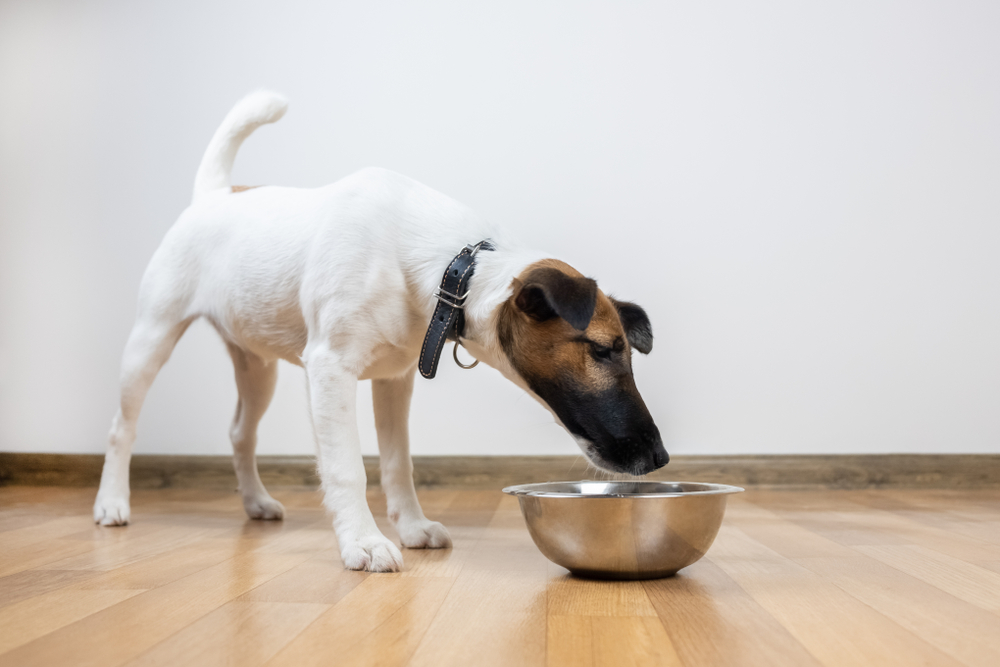[ad_1]
Dogs find many human foods tasty. However, due to differences in our anatomy, dogs experience taste differently from humans. When it comes to spiciness, dogs are capable of tasting spice and can even feel the heat, but their taste for spice isn’t as sensitive as a human’s. So, it’s likely your dog can eat something spicy without feeling the same intensity that you do.
Even though dogs may not taste the intensity of spicy foods when they initially eat it, they’re likely to feel it in their digestive system. Spicy food can still make dogs feel sick, so it’s recommended not to feed it to them.


Can Dogs Feel Spiciness?
Dogs have taste buds and are able to distinguish several different tastes. However, they perceive taste differently from humans. While humans have about 9,000 taste buds, dogs have just 1,700 taste buds. The number of taste buds also decreases as dogs age, which can further decrease their ability to taste spicy foods.
When it comes to spiciness, dogs can taste and feel it. However, it’s likely that it’s not to the same degree as humans. It appears that humans are more sensitive to spice levels than dogs.
The difference between human taste receptors and canine taste receptors is likely determined by a dog’s ancestral diet. Since their ancestral diet mostly consisted of meat, many dogs tend to have an affinity for meat and fat and seek these flavors out more than other types of food. Dogs also probably can’t distinguish between nuanced flavors like humans can. For example, dogs may have more trouble distinguishing between different types of berries just based on taste.


Is Spicy Food Bad for Dogs?
Most spicy food isn’t toxic to dogs, and dogs may not even taste the intense spiciness. However, it’s still not recommended to feed dogs spicy foods because they can still experience other adverse effects of eating it.
For example, dogs shouldn’t eat spicy peppers like jalapeños and cayenne because they contain capsaicin, which is the component in peppers that gives them their heat. Even if your dog doesn’t feel pain in their mouth, eating capsaicin can cause them to experience an upset stomach and digestive issues.
It’s likely your dog will experience vomiting or diarrhea after eating spicy food. In severe cases, spicy food can cause stomach ulcers. So, if your dog has eaten something particularly spicy, it’s best to contact your veterinarian for further care instructions.
💛 🐶 Speak To a Vet Online From the Comfort of Your Couch!


If you need to speak with a vet but can’t get to one, head over to PangoVet. It’s an online service where you can talk to a vet online and get the personalized advice you need for your pet — all at an affordable price!
What Other Flavors Can Dogs Taste?
Along with spice, dogs can taste sweet, sour, salty, and bitter flavors. They can taste most things that humans can taste, but they also have additional taste receptors for water that humans don’t have. These taste buds for water are located at the tip of their tongue and become more sensitive when a dog is thirsty. It’s likely that they were developed to encourage dogs to drink in order to prevent dehydration.
Another difference between human and canine taste is that dogs aren’t typically drawn to salty foods, again likely due to their ancestral diet being very limited in salt. It’s also possible that salty foods don’t taste good to dogs due to an evolutionary advantage. Not being attracted to salty food could help prevent dogs from consuming too much salt and experiencing dehydration.




Conclusion
Dogs can taste most flavors that humans can also taste, but spiciness is likely to feel less intense to them. If your dog does happen to eat something spicy, make sure to look for signs of an upset stomach or digestive issues. Dogs that have consumed something particularly spicy should be seen by a veterinarian for further treatment and to ensure they fully recover from ingesting something that could make them feel sick.
Featured Image Credit: Stock Studio 4477, Shutterstock
[ad_2]
Source link
